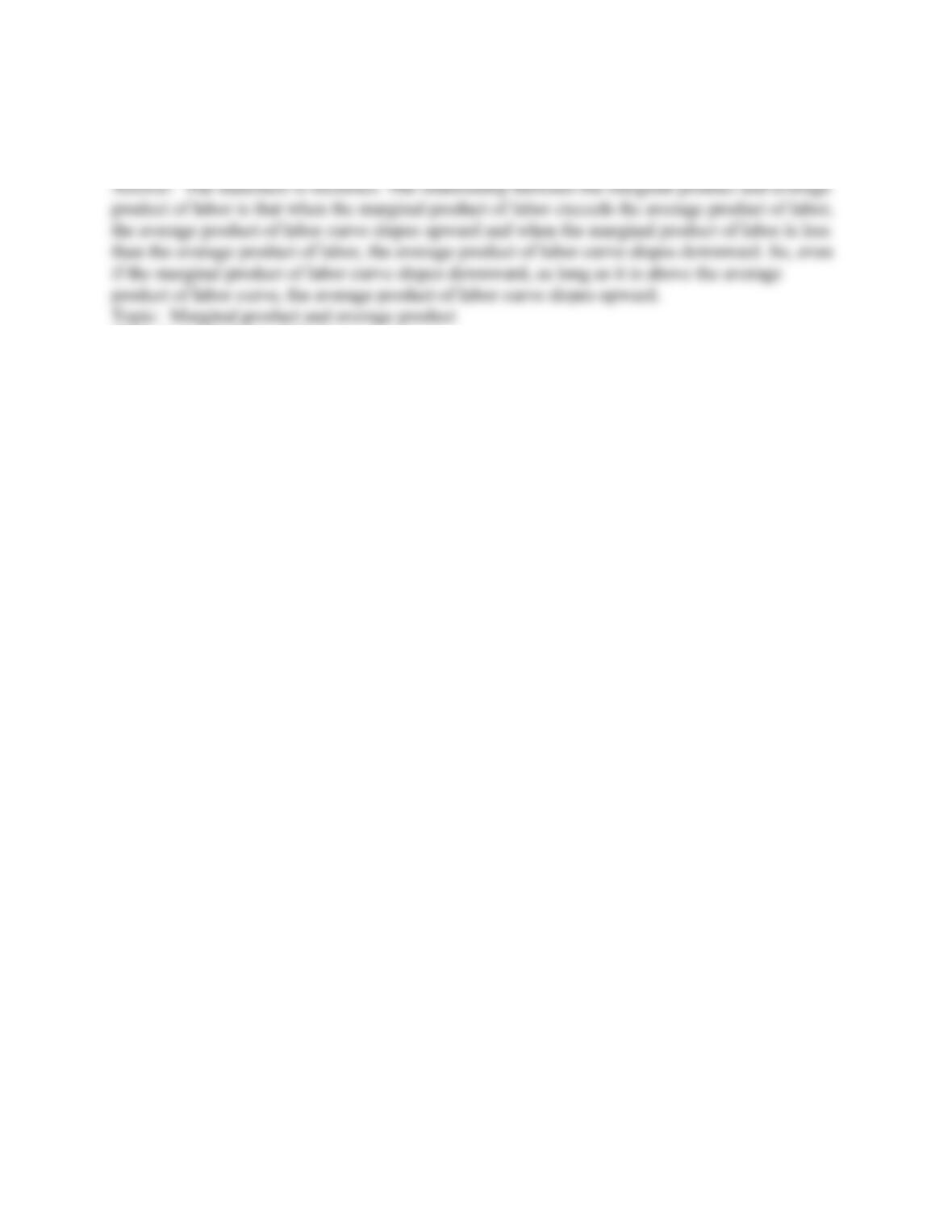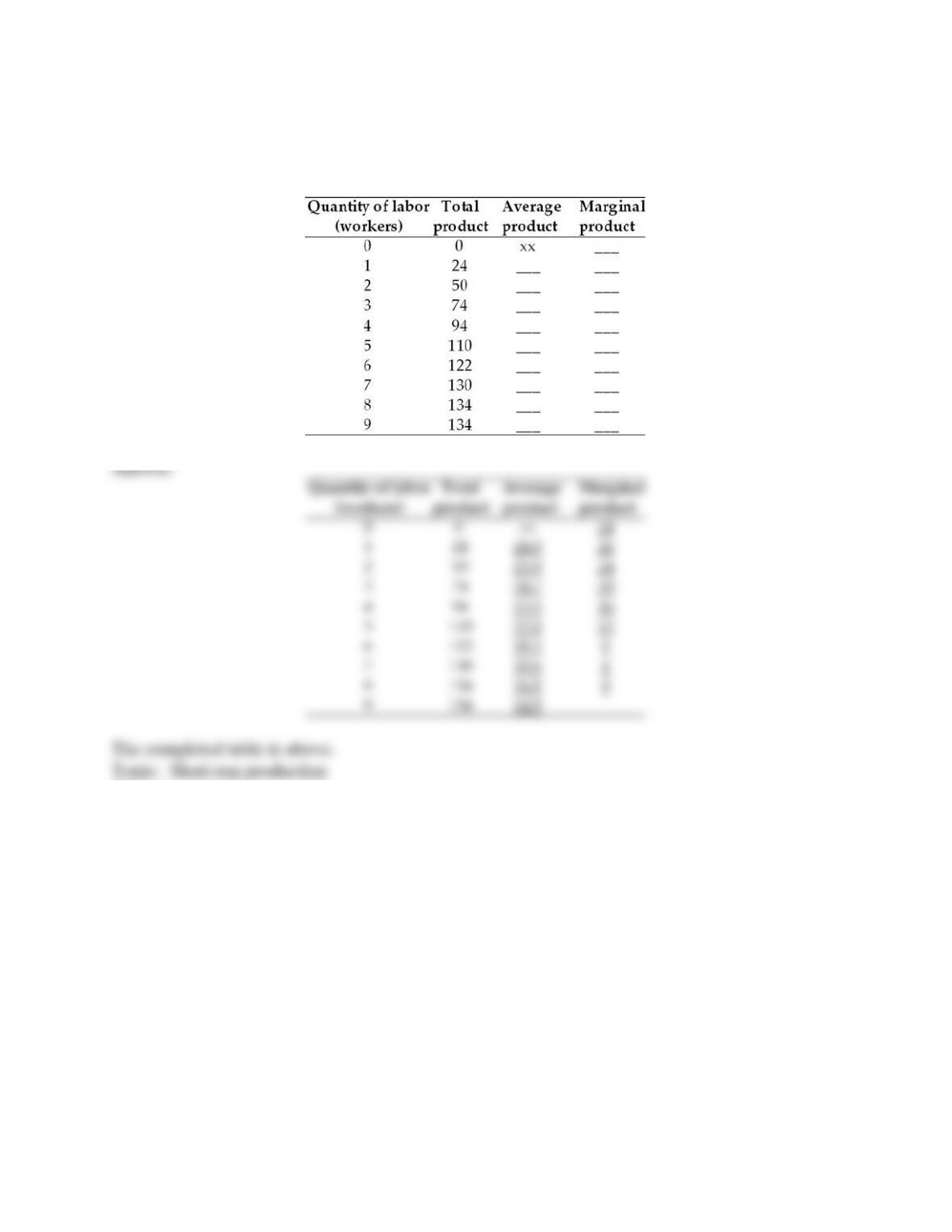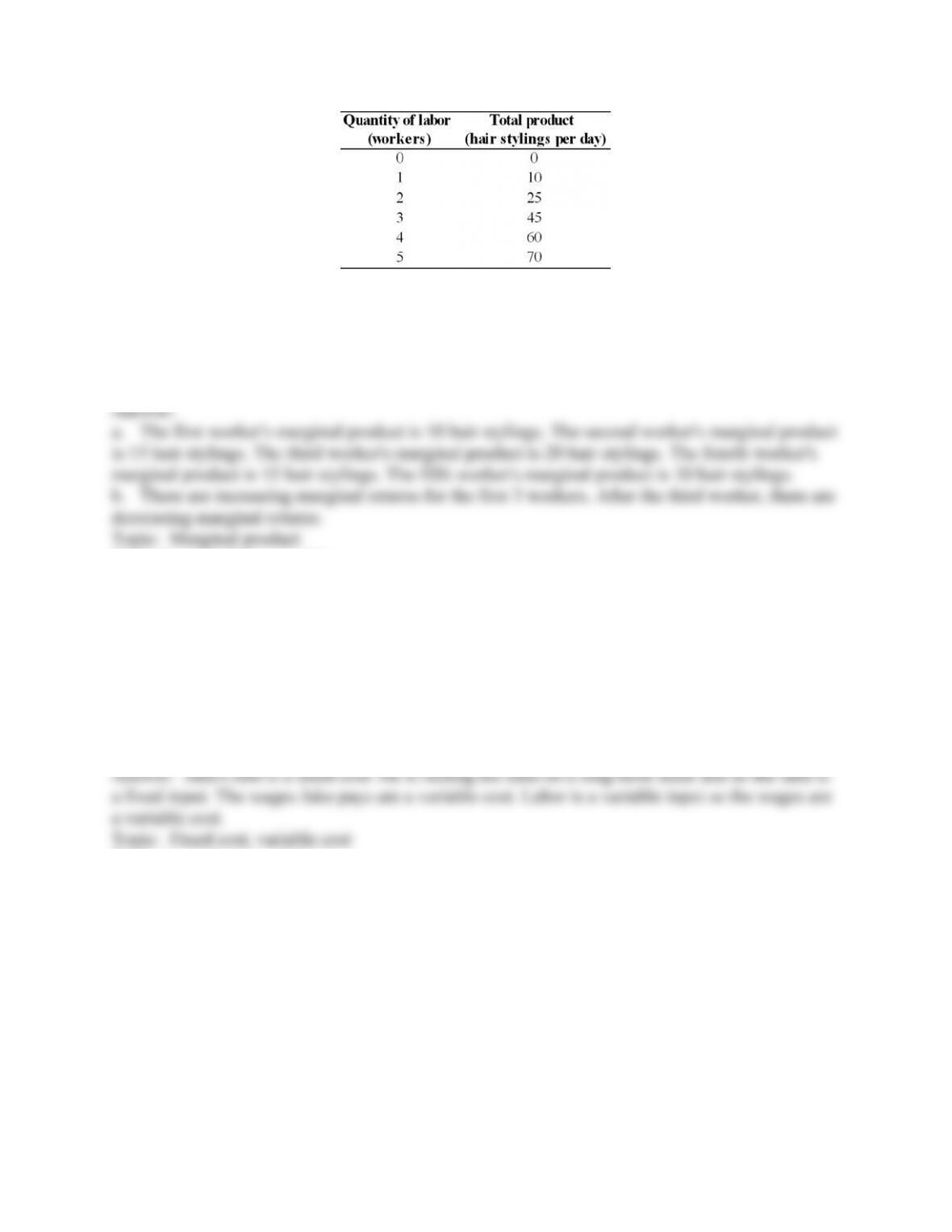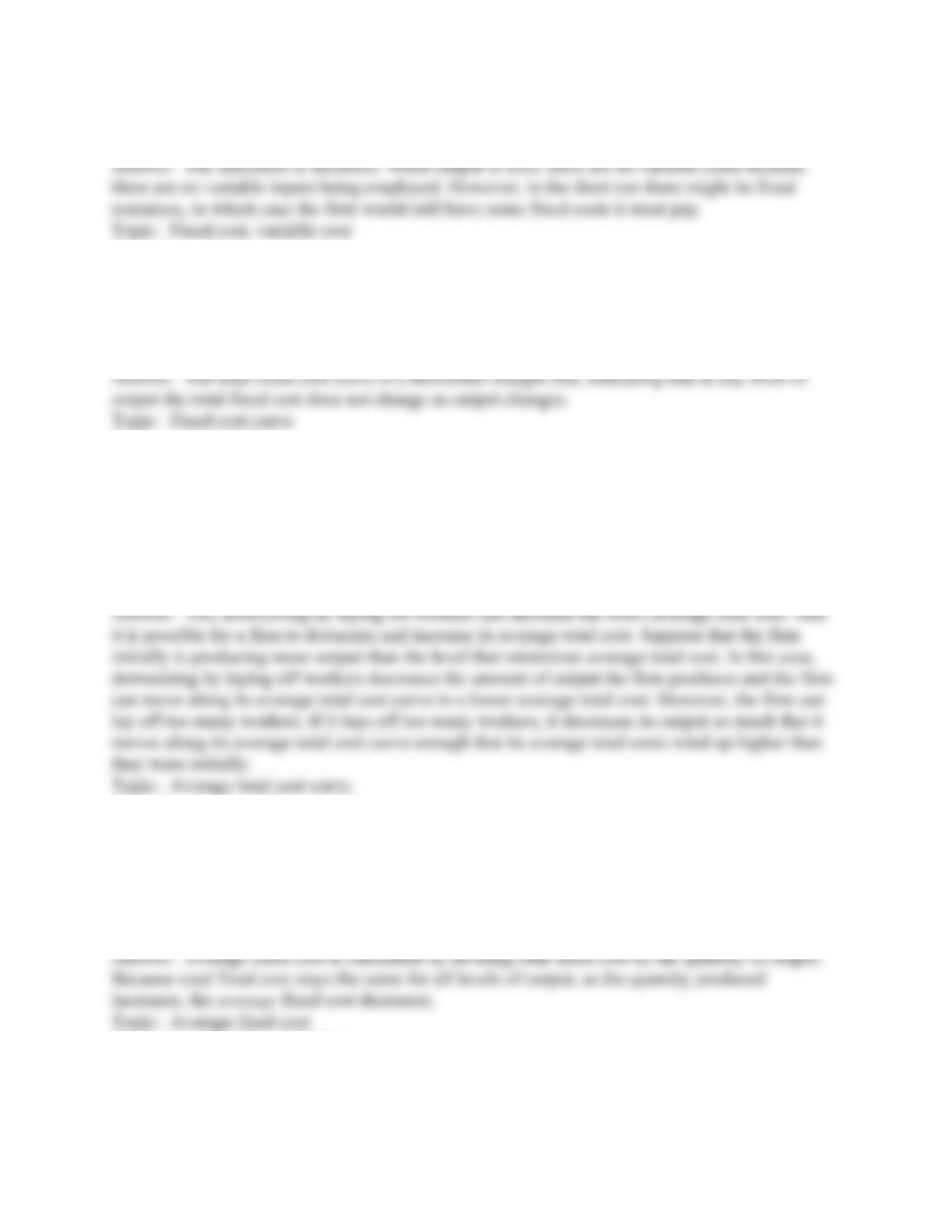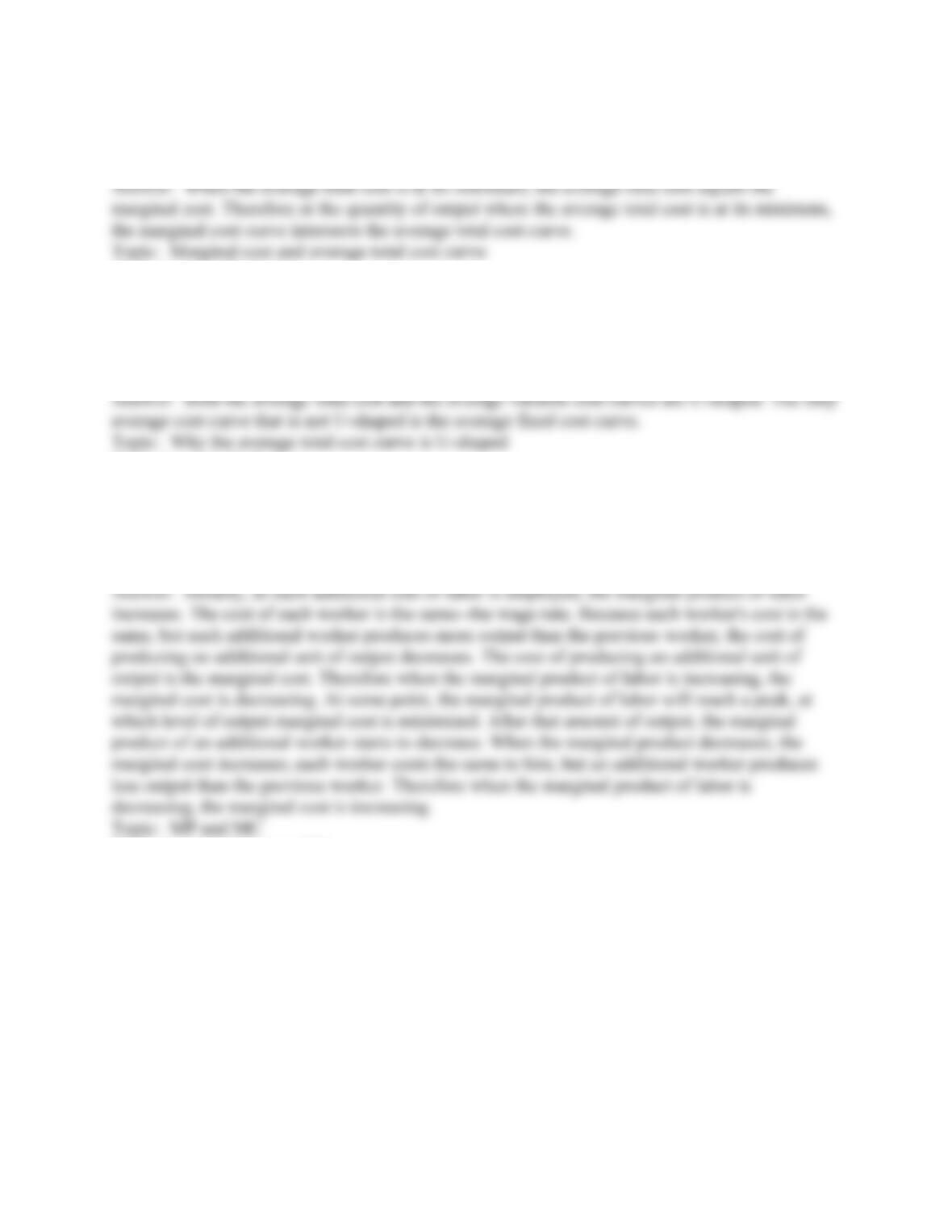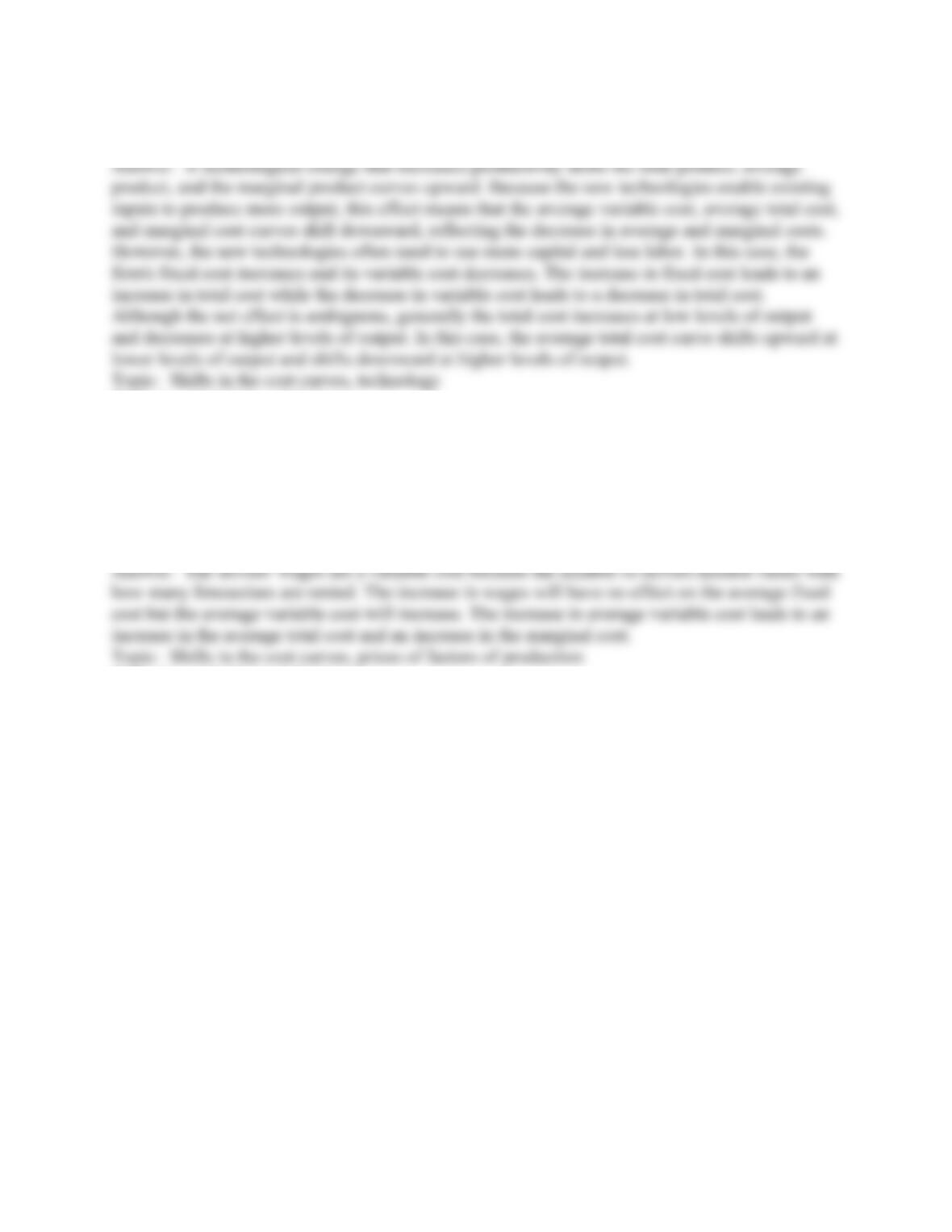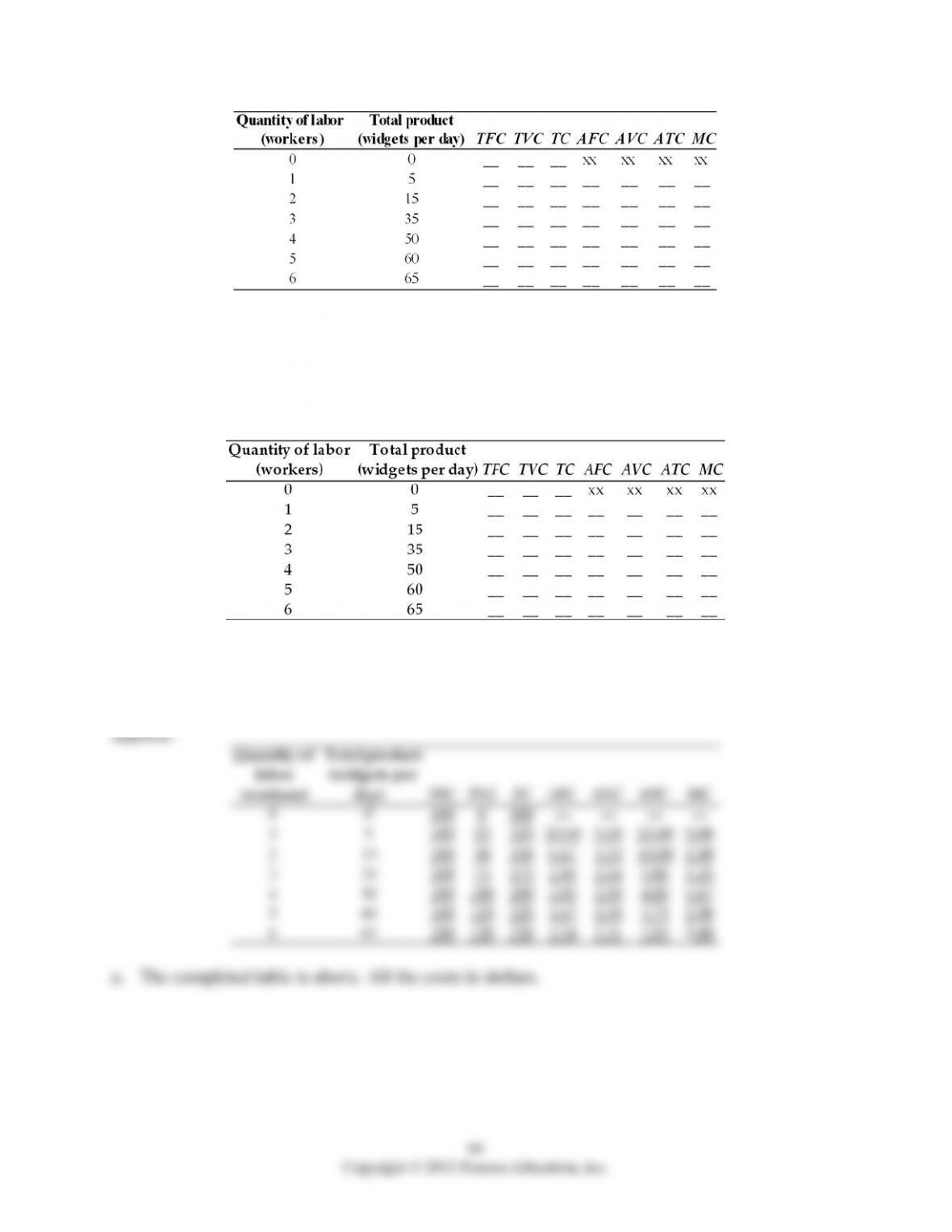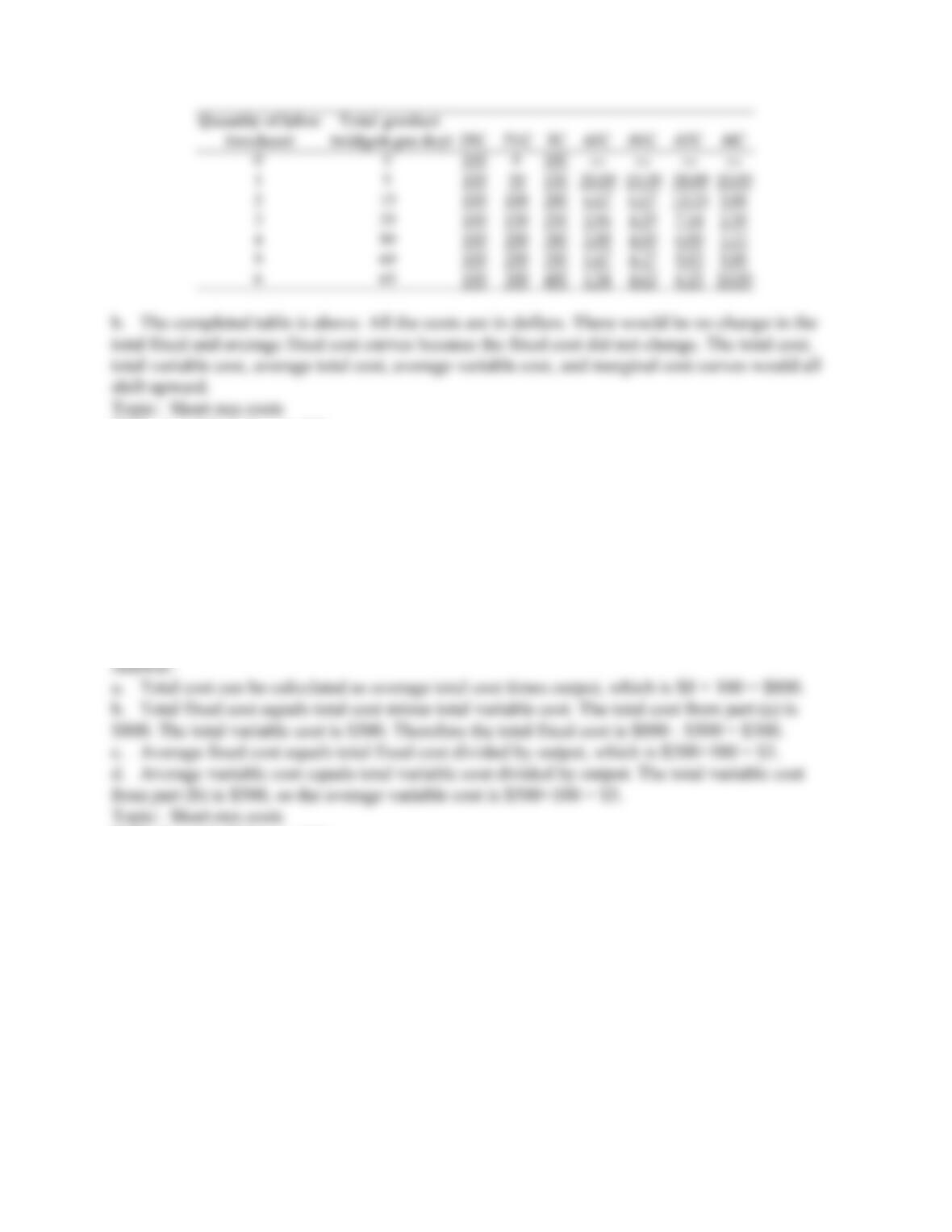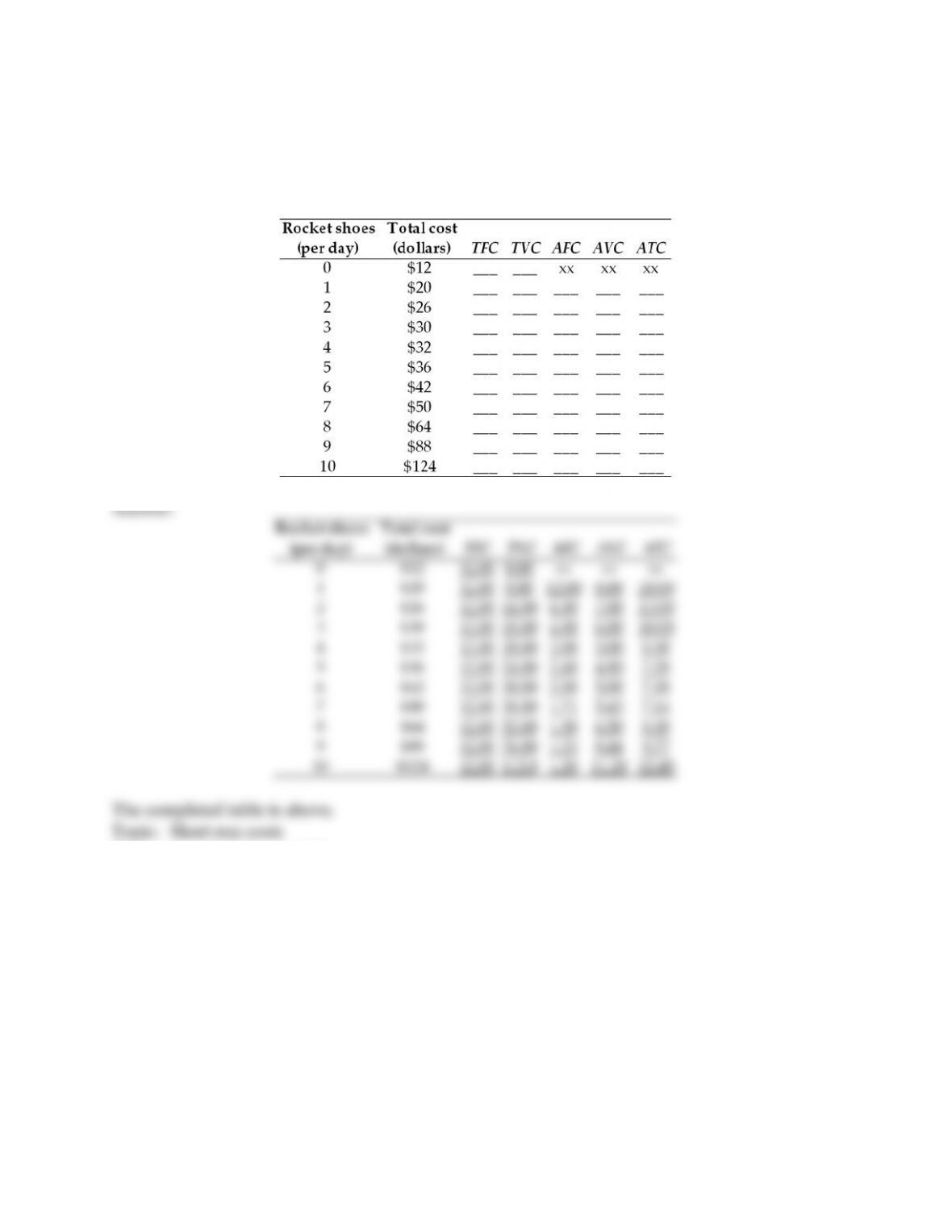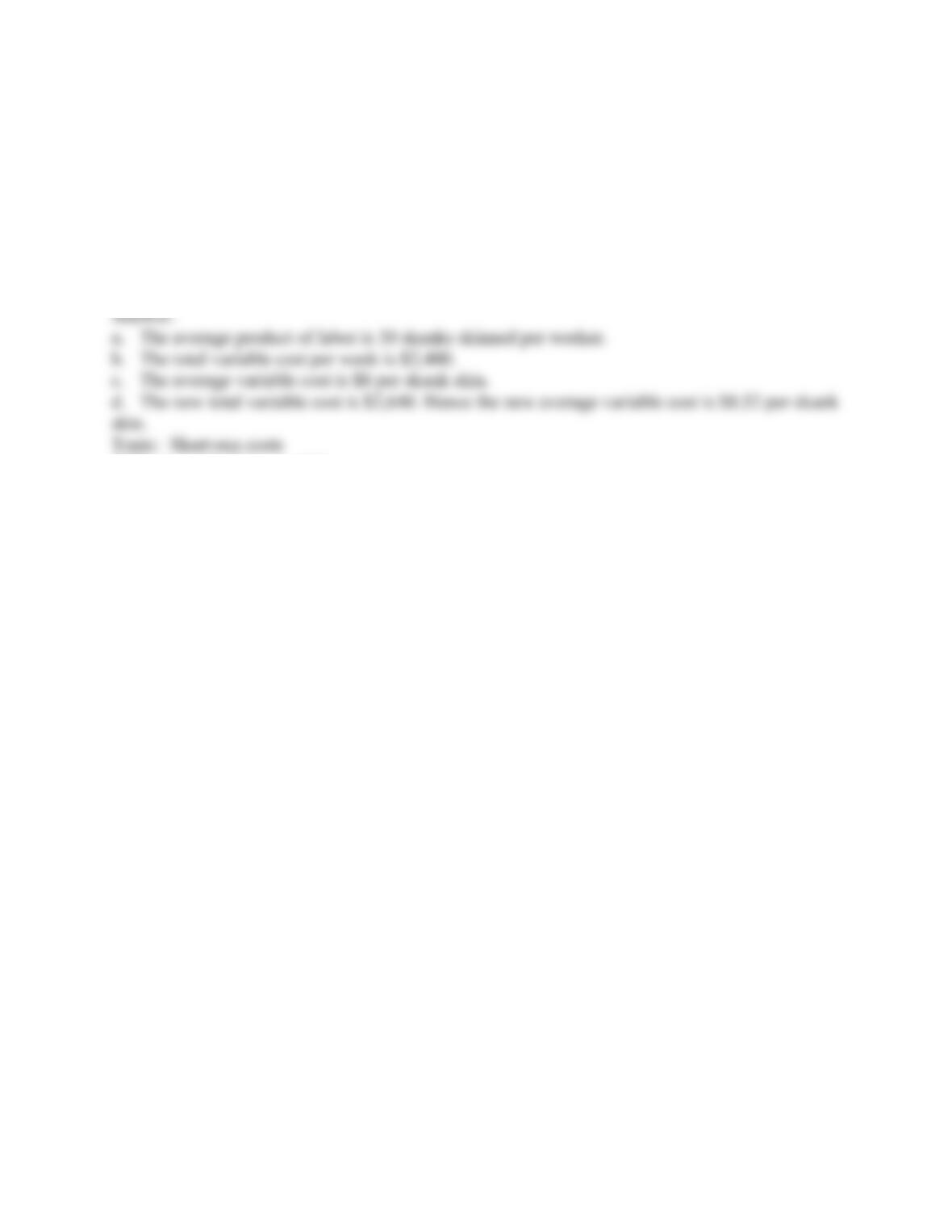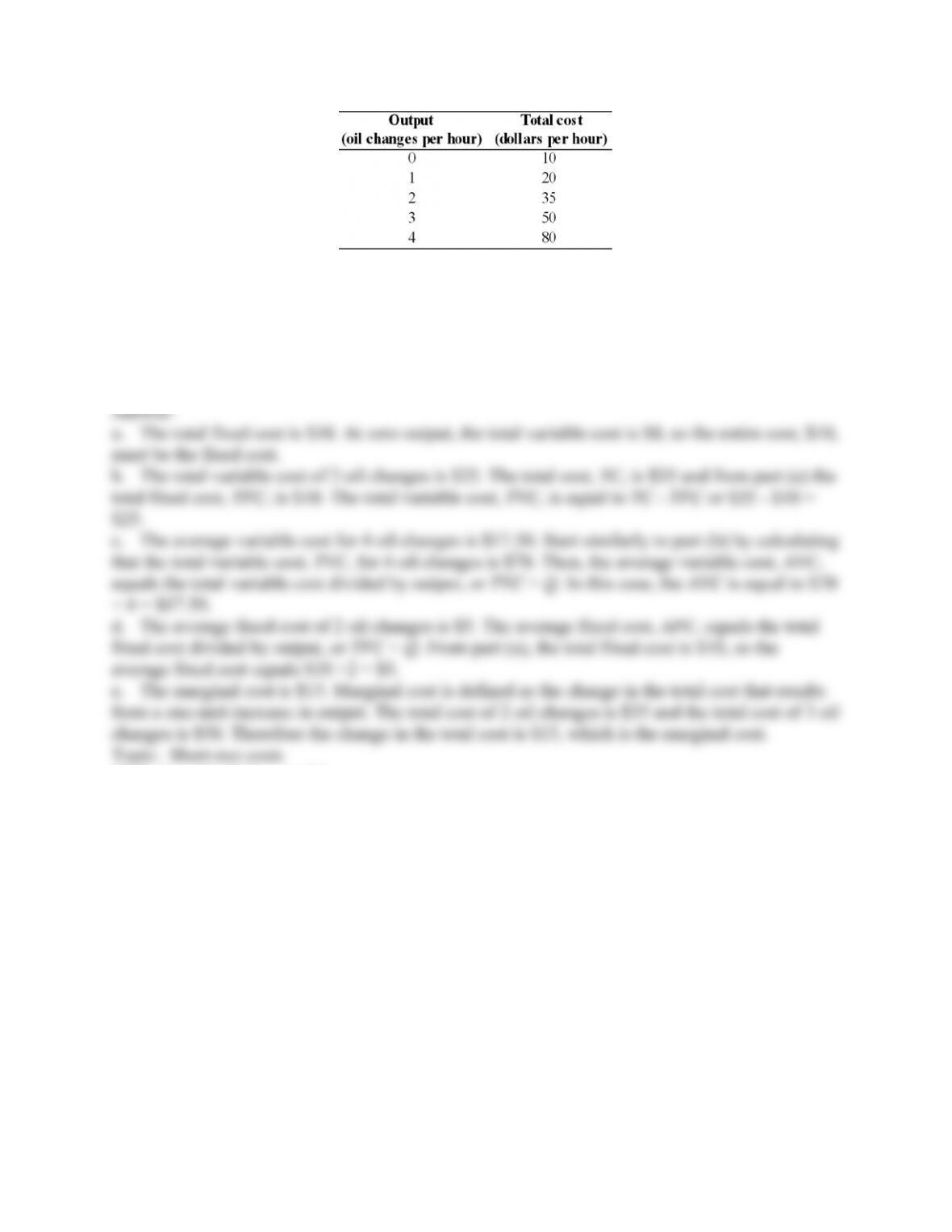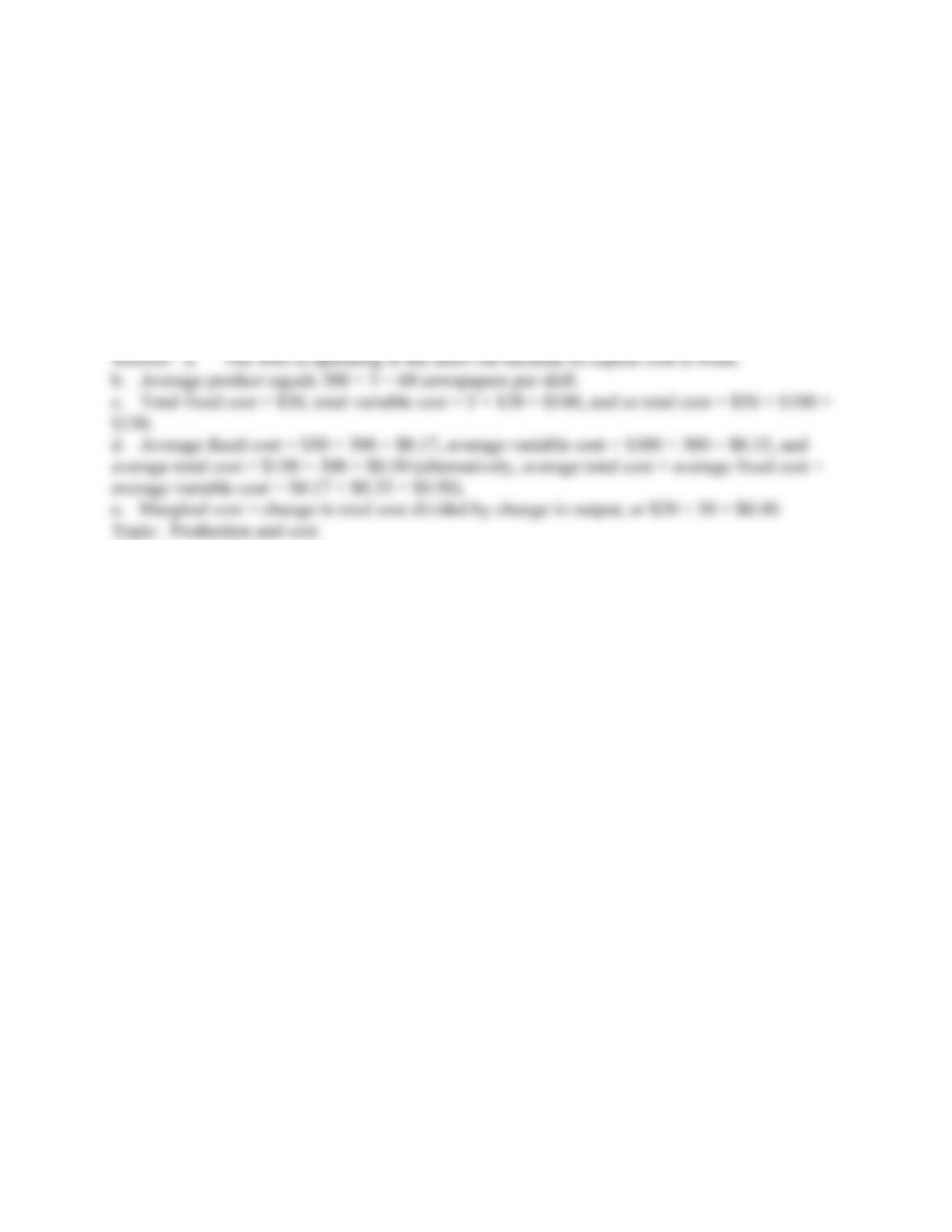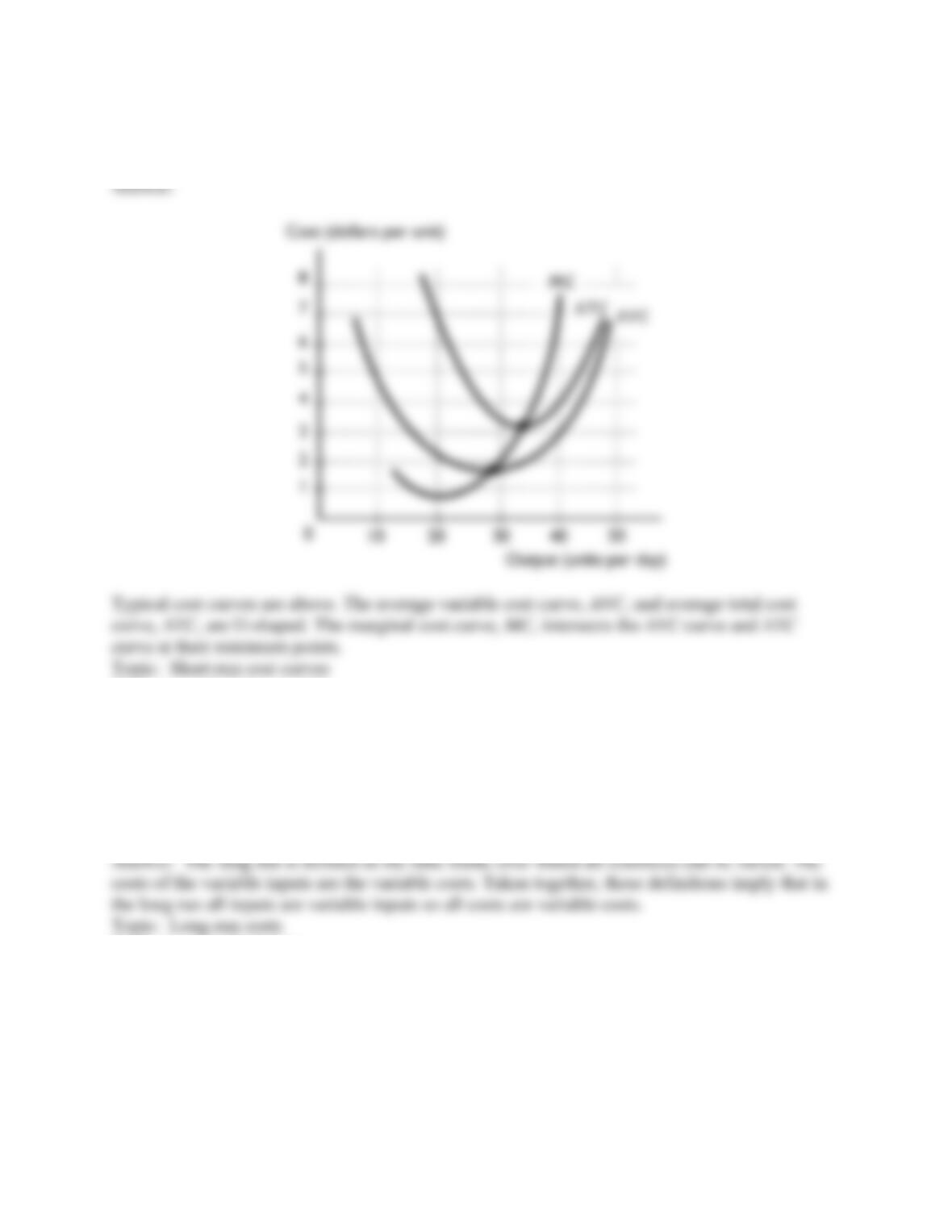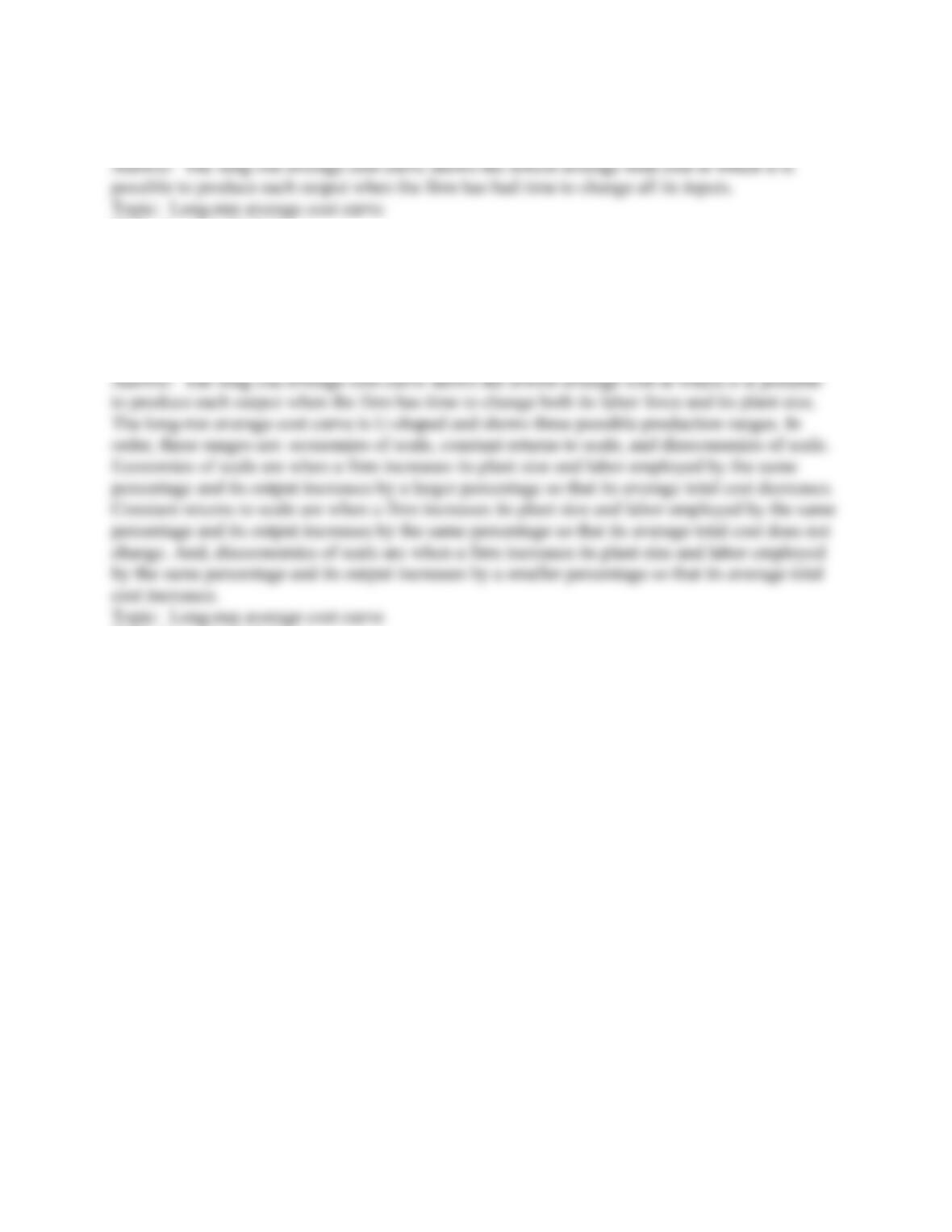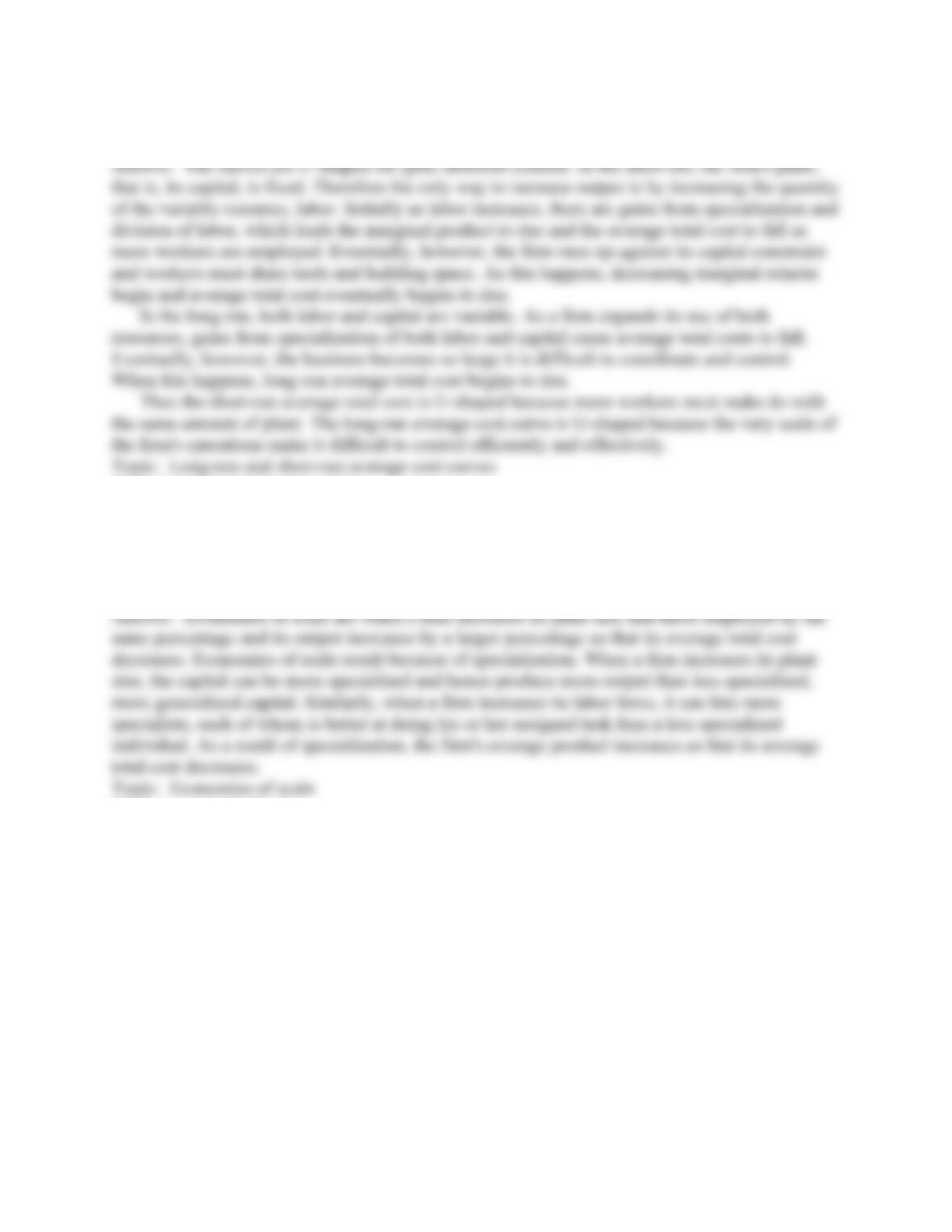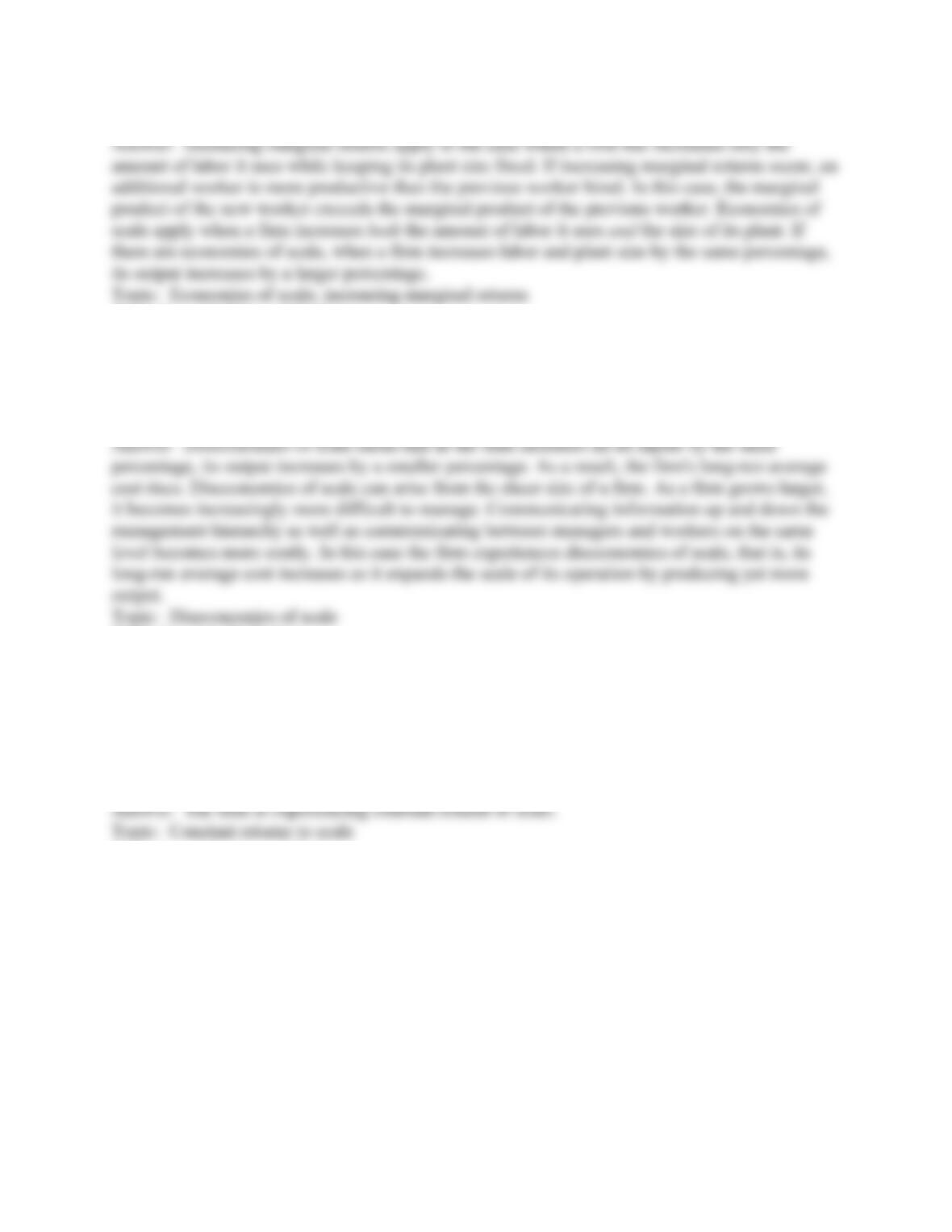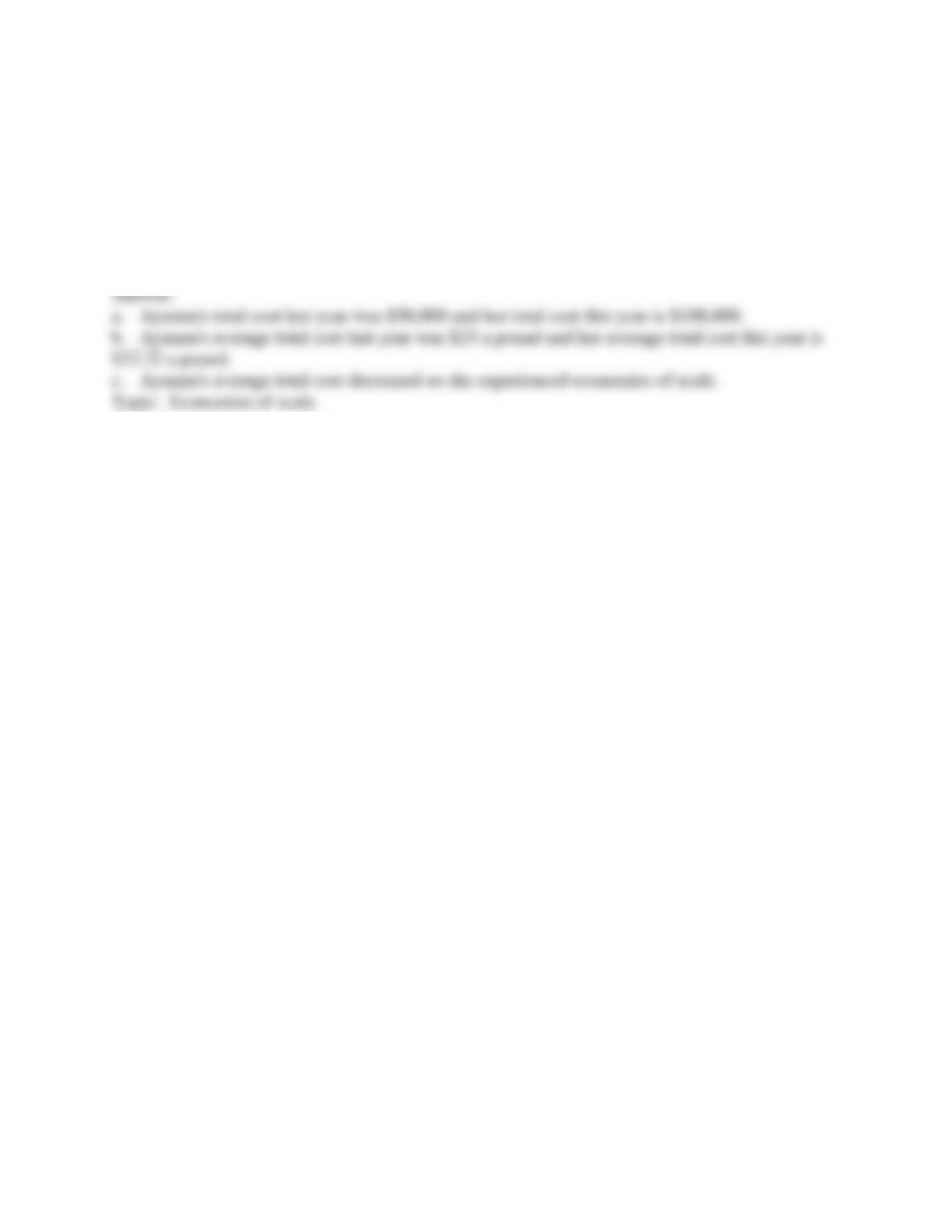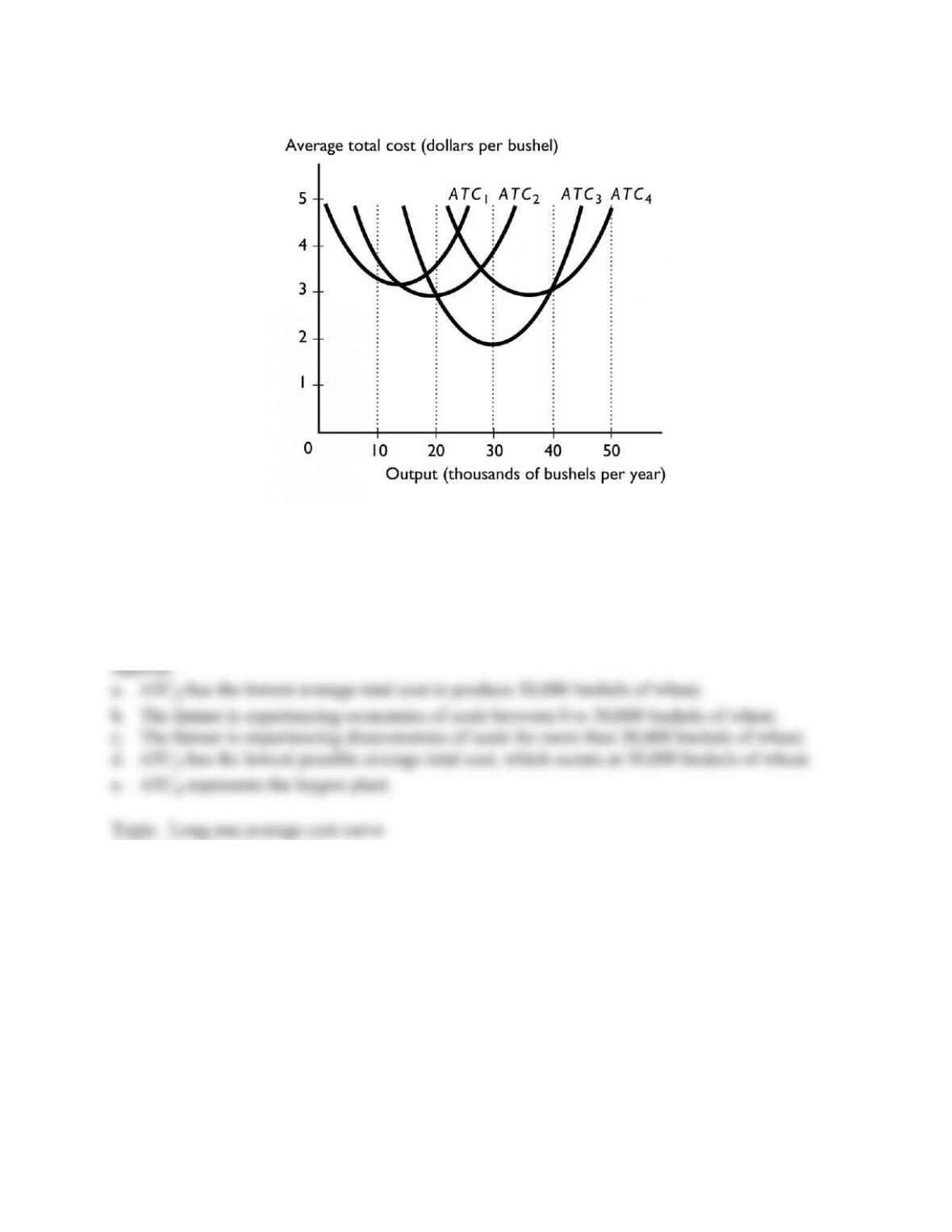12
Copyright © 2011 Pearson Education, Inc.
34) April quit her job as an accountant at Ernst and Young, where she was paid $45,000 per year.
She started her own landscaping business. She rents machines and tools for $50,000 and pays
$10,000 as wages to her help. These are her only costs. April earned total revenue of $100,000.
A) Her accountant calculates her profit as $40,000.
B) She has an economic loss.
C) Her explicit cost is $105,000.
D) Both answers A and B are correct.
E) Both answers A and C are correct.
Skill: Level 3: Using models
Section: Checkpoint 13.1
Author: SA
AACSB: Analytical reasoning
35) Jennifer owns a pig farm near Salina, Kansas. Last year she earned $39,000 in total revenue
while incurring $38,000 in explicit costs. She could have earned $27,000 as a teacher in Salina.
These are all her revenue and costs. Therefore Jennifer earned an
A) accounting profit of $1,000 but incurred an economic loss of $26,000.
B) accounting profit of $1,000 but incurred an economic loss of $65,000.
C) accounting profit of $1,000 but incurred an economic loss of $38,000.
D) economic profit of $1,000.
E) None of the above answers is correct.
Skill: Level 3: Using models
Section: Checkpoint 13.1
Author: JC
AACSB: Analytical reasoning
36) Suppose a firm's total revenue is $1,000,000. The firm has incurred explicit costs of
$750,000. There is also $50,000 of forgone wages by the owner, $10,000 of forgone interest by
the owner, $3,000 worth of economic depreciation, and $20,000 worth of normal profit. What is
the firm's economic profit?
A) $250,000
B) $200,000
C) $190,000
D) $167,000
E) $180,000
Skill: Level 3: Using models
Section: Checkpoint 13.1
Author: PH
AACSB: Analytical reasoning

























































































